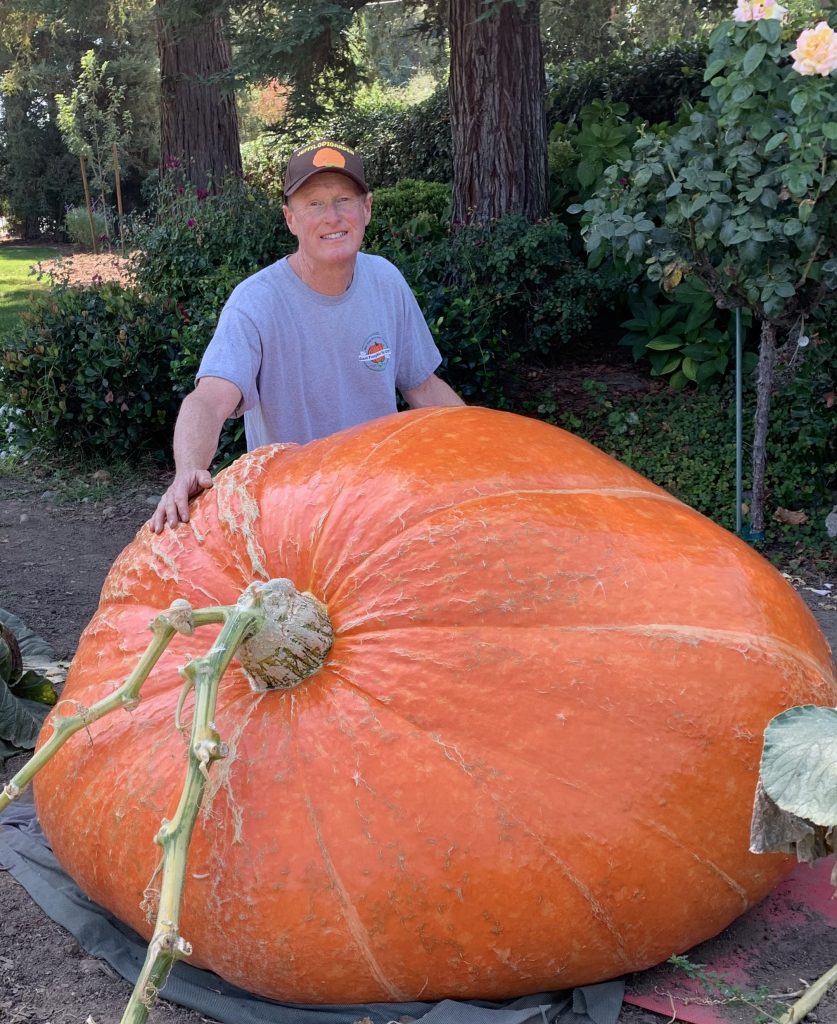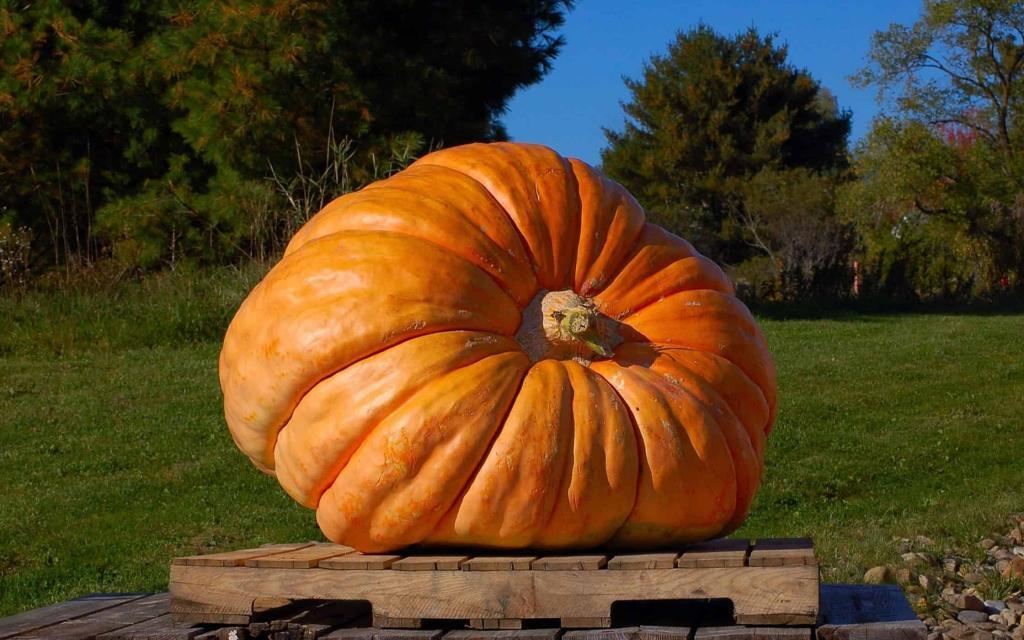Almost everyone has seen pictures of giant pumpkins, and many people want to learn how to grow giant pumpkins. Growing a giant pumpkin is not as difficult as it may seem, but there are some things that you need to know in order to be successful. In this blog post, we will discuss the basics of growing giant pumpkins, including soil preparation, watering, fertilizing, and pest control. We will also give you some tips on how to select the right pumpkin variety for your climate and growing conditions. Read on to learn how to grow your own giant pumpkin!

The first step in growing a giant pumpkin is to choose the right seed. There are many different seed types of Atlantic Giant Pumpkins. If you desire a bright orange Atlantic Giant Pumpkin, you will want to choose a pumpkin seed that came from a bright orange giant.
Conversely, if you desire to grow giant pumpkins and are ambivalent to color, you can choose a pumpkin seed that came from a very large Atlantic Giant Pumpkin that is light orange. You should also consider the size of the pumpkin that you want to grow when choosing a variety.
Some pumpkins can reach weights of over 1,000 pounds, while others only reach a few hundred pounds. Selecting the right pumpkin seed is critical to success.
Once you have selected the right pumpkin seed, it is time to prepare your soil. Pumpkins require well-drained, fertile soil in order to thrive. If your soil is heavy or clay-like, you may need to add some organic matter, such as compost or manure, to help improve drainage. The pH of your soil should also be tested and adjusted if necessary. Most pumpkins prefer slightly acidic soil with a pH between 6.0 and 7.0.
After your soil is properly prepared, it is time to plant your pumpkin seeds. Pumpkin seeds can be planted directly in the ground or started indoors in pots. If you are starting your seeds indoors, they should be planted about six weeks before the last expected frost date in your area. Once your pumpkin seeds have germinated, and the seedlings have developed their first true leaves, they can be transplanted into the garden.
It takes a lot of water to grow giant pumpkins, so you will need to water them regularly. It is best to water pumpkins early in the morning so that the leaves have time to dry off before nightfall. If you live in an area with high humidity, you may need to water your pumpkins less frequently.
One way to determine if your pumpkin plants need water is to check the soil around them. The soil should be moist but not soggy. If it feels dry several inches below the surface, it is time to water.
Pumpkins also need regular fertilization to grow properly. A general-purpose fertilizer can be used, or you can purchase a fertilizer specifically formulated for pumpkins. Fertilize your pumpkin plants every two weeks during the growing season. If you live in an area with a long growing season, you may need to fertilize your pumpkins more frequently.
Pest control is also important when growing pumpkins. Common pests that attack pumpkins include cucumber beetles, squash bugs, and cutworms. These pests can be controlled by hand picking them off of the plants or using a pesticide designed for use on cucurbit crops.
If you follow these tips, you should have no problem growing giant pumpkins in your backyard. Just remember to select the right variety, prepare your soil properly, water regularly, fertilize regularly, and control pests. With a little care and attention, you can grow massive pumpkins that will impress everyone who sees them! To continue your giant pumpkin growing journey, check out Big Pumpkins, an excellent resource.
Grow Giant Pumpkins for Benefits
Pumpkins are a fruit that is often overlooked. However, pumpkins have many benefits that should not be ignored. Pumpkins are a good source of fiber, vitamin A, and potassium. They can also help improve your immune system and protect your heart health. Pumpkins are versatile fruit that can be used in both sweet and savory dishes. So next time you are at the store, make sure to pick up a pumpkin and give it a try! You might be surprised at how delicious it can be.
Pumpkins are a great source of fiber, which is important for keeping your digestive system healthy. Fiber helps to move food through your intestines and can also help to reduce cholesterol levels. Fiber is also beneficial for weight loss because it makes you feel fuller and longer. So if you are looking to lose some weight, adding pumpkin to your diet is a great way to do it!
Pumpkins are also a good source of vitamin A. Vitamin A is important for vision and skin health. It can also help to boost your immune system. Vitamin A is found in orange and yellow fruits and vegetables, so pumpkins are a great way to get your daily dose.
Potassium is another nutrient that is found in pumpkins. Potassium is important for heart health and blood pressure regulation. It can also help to prevent cramps and other muscle problems. Potassium can be found in many foods, but pumpkins are a great source because they are low in calories and fat.
Pumpkins also contain antioxidants, which are important for fighting free radicals. Free radicals are harmful molecules that can damage cells and lead to disease. Antioxidants help to neutralize these harmful molecules and protect your cells from damage. Pumpkins are a great source of antioxidants, so eating them regularly can help you stay healthy and disease-free.
As you can see, there are many benefits of pumpkins that make them a great addition to your diet. So next time you are at the store, make sure to pick some up and give them a try! You might be surprised at how delicious they can be. Reach out to us if you want to learn anything specific about gardening or farming. We will be delighted to assist you.
Be sure to check out my book, Backyard Big: Growing Atlantic Giant Pumpkins in Your Backyard, available on Amazon and Barnes & Noble.

